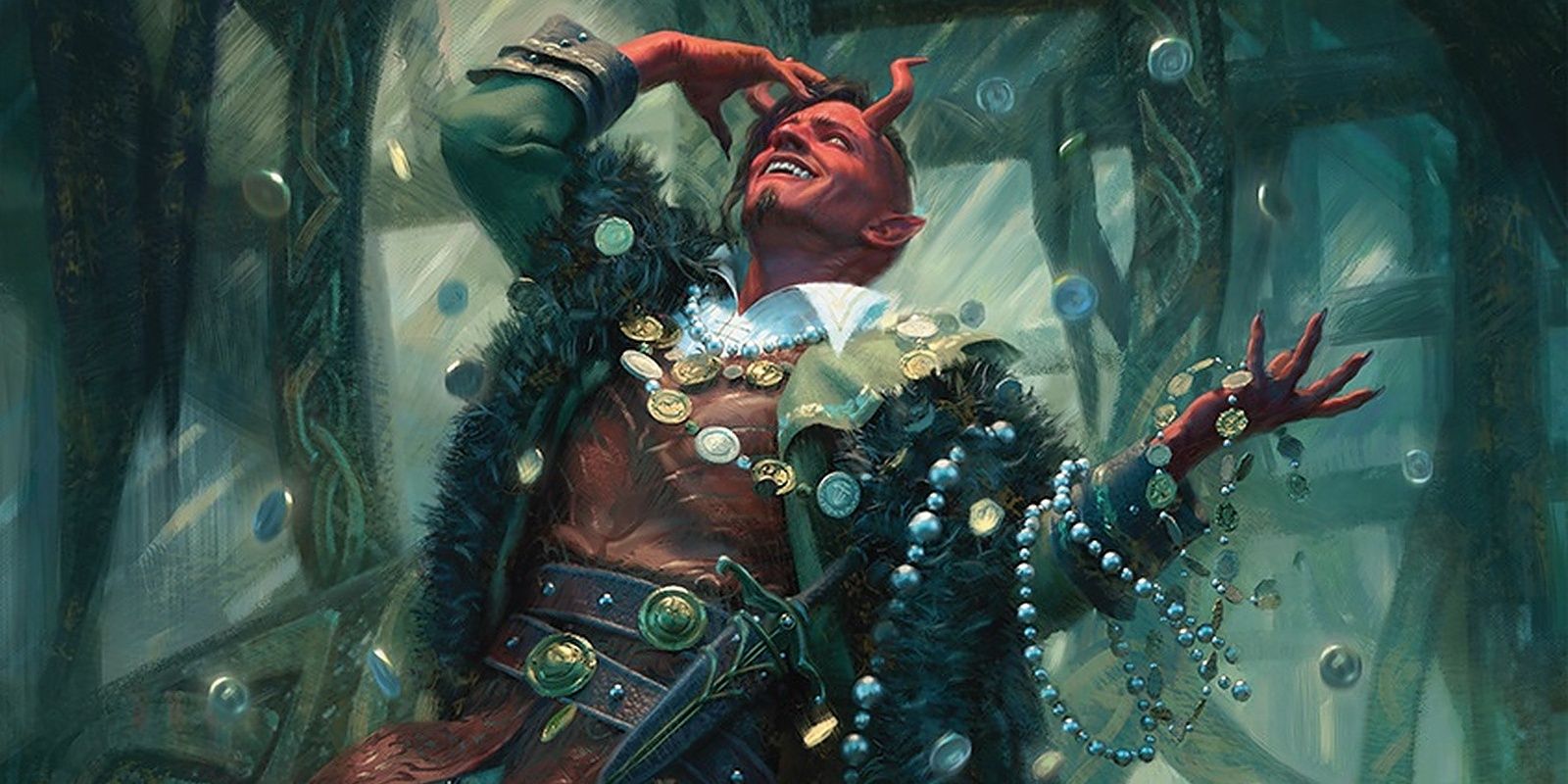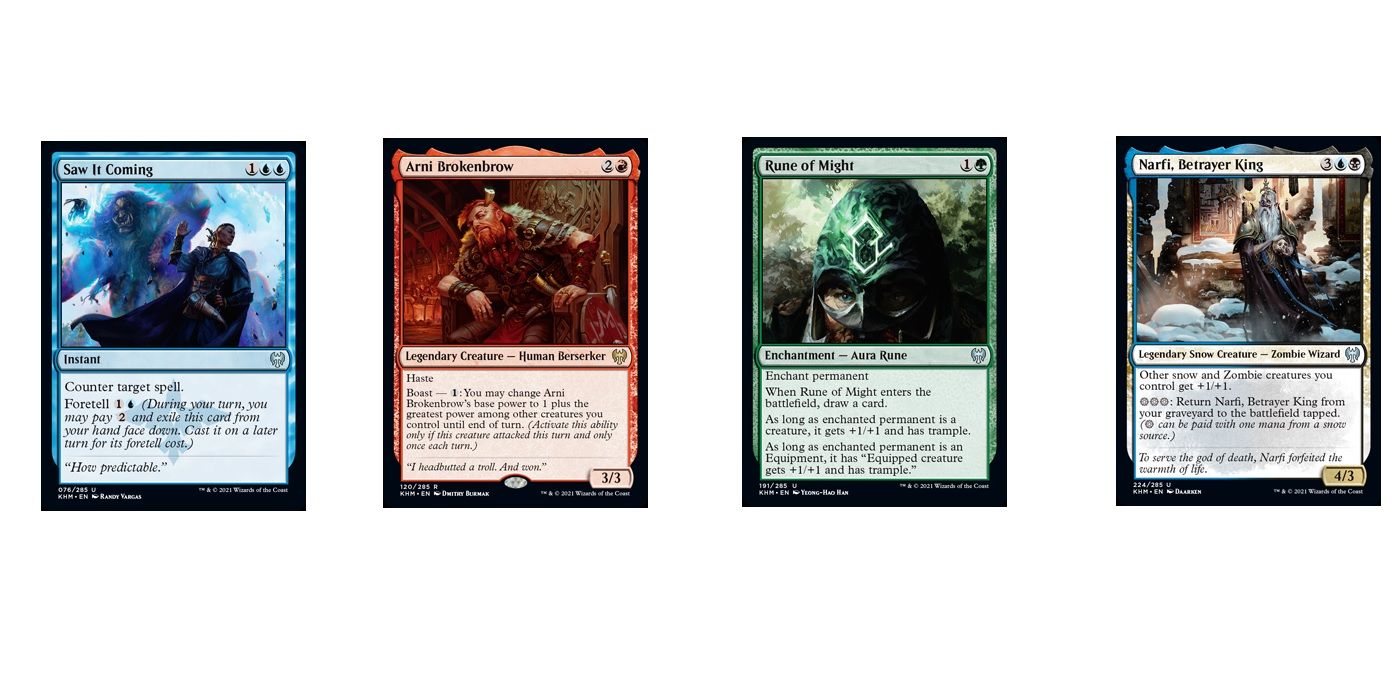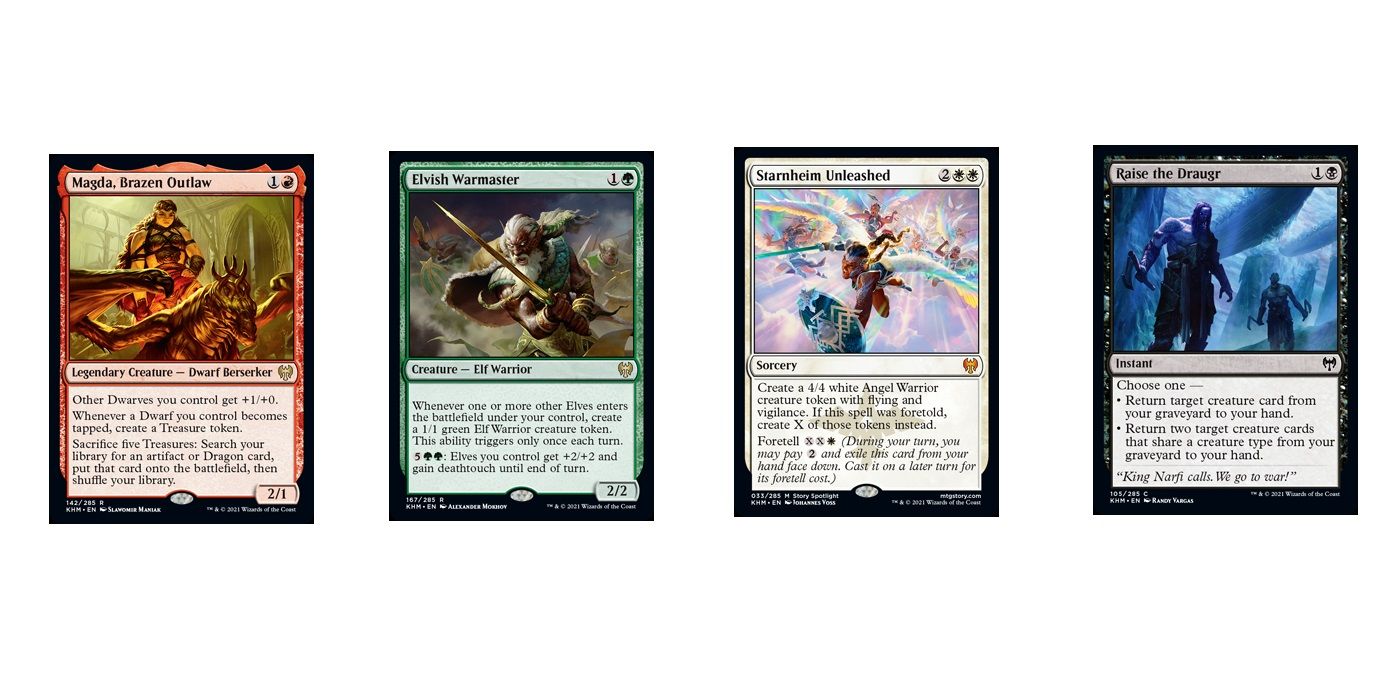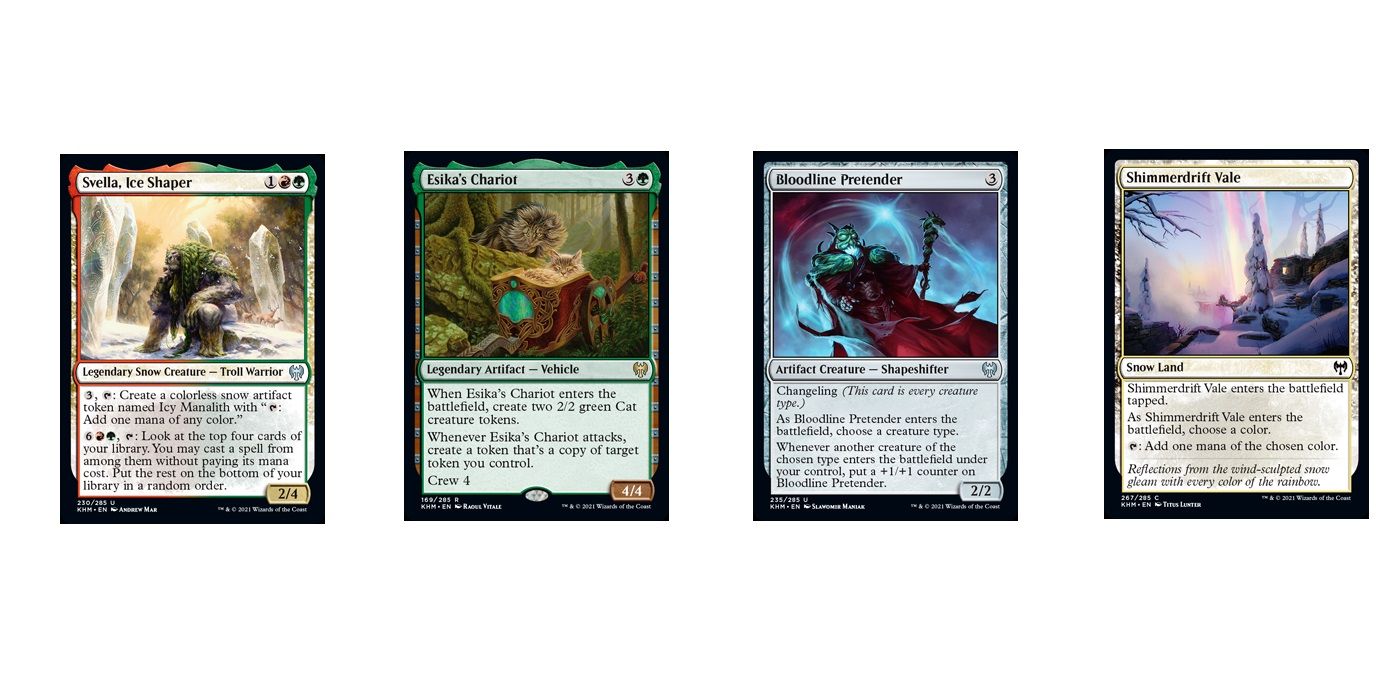Magic: The Gathering's newest expansion set is Kaldheim, and its spoiler season began back in December 2020, teasing a frosty world of auroras and legendary Viking warriors. Now the entire set has been unveiled, and the its release is right around the corner. Of course, new sets can be opportunities for new players to jump into the game, and it's important for newcomers to understand how this set can be drafted.
Once Kaldheim releases in paper Magic and the online games (Arena and Magic: The Gathering Online), players ought to know what the archetypes and strategies are for games of booster draft Limited. Like most sets, Kaldheim has two-color draft archetypes, but the set's new mechanics, clear tribal theme and Snow sub-theme add some more options. Players might even forgo the archetypes entirely if they're feeling creative or can't find enough of the right cards in their draft pod.
How to Draft With Kaldheim
Novice Magic players can jump right into the game with dedicated starter decks and Core Sets, which are tailor-made for newcomers. However, if rookie players want to play with slightly more advanced and stylish cards, they can try booster draft with Kaldheim, and that's a fine chance to learn exactly how booster draft events play out.
This is not an event where players bring their own pre-made decks; instead, players are given three Kaldheim booster packs. Once the event launches, the players are sorted into pods, groups of six to eight players where seating is assigned at random). Then, each player opens one Kaldheim booster pack, removes the token and chooses one card they want to keep and include in their deck.
Draft is all about building a deck on the fly, and players may choose a strong rare card or a fancy multicolored card as the starting point for their deck. Any good card that catches the player's eye can act as the seed for that deck, and once all the players have chosen their first card, they all pass their packs to the player to the left. Then, the players choose a second card and passes the boosters again. Once the first round is done, the players do the same with the second booster, except they pass to the right. For the third round, players pass to the left again.
A player may realize that cards of a certain color are rapidly vanishing from their deck, and if so, the player might abandon that color and switch to another. For example, if a player is planning to draft a green-white deck, but the good white cards are being thinned out fast, they may drop white and switch to a color that's appearing more often, such as red.
By the time the second pack is being opened, the player can go for good red and green cards, and ignore the few white cards that they've already drafted thus far. After all, a pod will have many but finite cards, and some archetypes or colors may be gobbled up fast. Competing with other players may be a losing proposition, so a player can take advantage of an underused color and make a strong deck without having to fight the other players for the cards that they need.
The Tribes & Archetypes of Kaldheim
Like most expansion sets and expert-level draft sets (such as Double Masters), Kaldheim features 10 two-color archetypes that players can use as a guide for draft, many of which are based on tribes. There is a white-red Dwarf aggro deck augmented by Equipment cards, Vehicles and Treasure tokens, representing how Dwarves are masters of the forge.
If the player goes white-black, their deck may feature Human warriors, some Zombies and a number of Angels to create a lifegain midrange deck that has a subtheme of "if you cast two spells this turn." Together, blue and white mana are all about Spirit tribal and using Foretell to control the game, and when blue and black join forces, they make a self-mill Zombie tribal deck that's rather grindy.
The Elf tribe is here too, represented in black and green mana to form a vicious tribe that relies on removal as much as it does on +1/+1 counters and tribal synergy. Red and blue form a Giant/Wizard tribal deck, where Wizards of any creature type appear first, then the Giants that act as finishers (since they are too costly to be played in the early game). Green and white form a Human and Angel-based beater deck, and red and green combine to form a Troll-based beatdown deck with a lot of pump spells and removal effects.
Black and red create a cruel but effective aristocrats deck, feeding lesser creatures to its Sagas and large creatures for benefit. Boast is often used in that archetype. Finally, the blue/green archetype is centered around Shapeshifters, a tribe that is technically all tribes, since all these creatures have Changeling. These Shapeshifters can choose a tribe and focus on it. They also have a distinct Snow theme, given their colors -- Kaldheim has a lot of Snow in blue, red and green in particular.
Other Notes for Kaldheim Draft
For the most part, a set's built-in archetypes are a great blueprint for any draft deck, but players still have some room for innovation, especially since some players may have difficulty following those archetypes for one reason or another. Fortunately, Kaldheim is flexible. Some of its blue or colorless cards can turn all creatures the player controls into the same type, such as Maskwood Nexus (a colorless artifact). Or, the player can gather some creatures of a type, then find a one-size-fits-all lord effect, such as Bloodline Pretender or the blue enchantment Reflections of Littjara. Meanwhile, players can splash green mana and Humans to their white-red Dwarf deck.
What is more, players might go for a Temur-colored "Snow matters" deck, using blue, red and green mana to synergize with all the Snow cards found in those colors. White and black have Snow cards too, but arguably, Temur is the way to go. Svella, Ice Shaper fits well into this peripheral archetype, making Icy Manalith tokens and searching the library's top four cards for a spell to cast for free. Cards like Graven Lore and Blessing of Frost don't cost Snow mana to cast, but they get much stronger if that mana is used to cast them.
Other cards such as Boreal Outrider, Blizzard Brawl, Tundra Fumarole, Frost Bite, Avalanche Caller and Icebreaker Kraken are also must-haves for the deck. For the sake of mana fixing, this deck should run Snow-covered dual lands of the correct colors, and Shimmerdrift Vale can help, too. Snow-covered basics help too, but they must be actively drafted like other cards (they aren't automatically included in decks).
Finally, the three Planeswalkers of this set -- Niko Aris, Kaya and Tibalt, Cosmic Imposter -- can be used in any kind of deck, especially if the player couldn't make an archetype come together. These Planeswalkers are powerful in any deck that runs their colors, regardless of the archetype or lack thereof in that deck.




